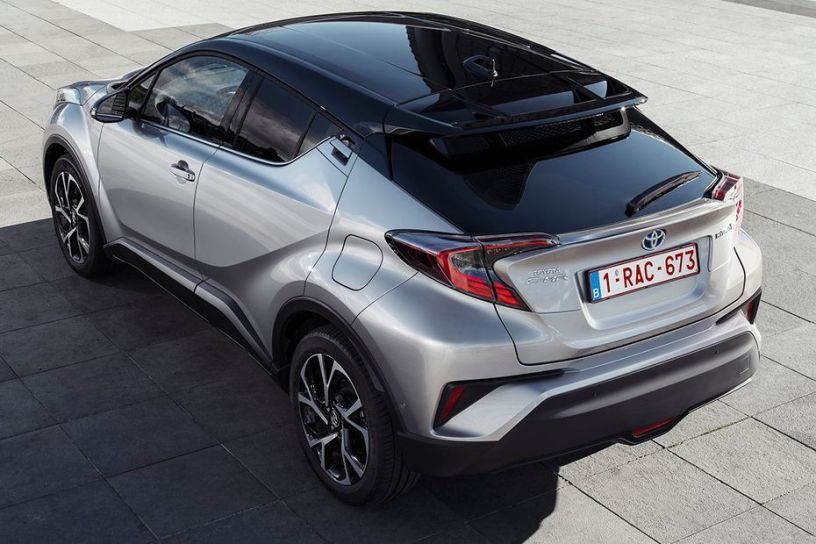Toyota Rush May Not Come To India, And The Reason Is

…. its coupe-inspired sibling, the C-HR, is already here!

Nowadays, manufacturers are putting money on developing and expanding their SUV lineup. Toyota too is treading the same route here in India. Out of the four SUV segments – sub-4m/sub-compact, compact, midsize and full-size – the Japanese automaker has already struck off two: the sub-4m will be addressed by the upcoming, rebadged Maruti Suzuki Vitara Brezza, while the Fortuner already retails in the full-size space and also happens to be the bestseller there!

So, Toyota is still off the radar of compact and midsize SUV segments, which largely address the Rs 10-20 lakh price bracket in the country. The Japanese automaker is now planning to take on the said price band with either the Rush or the C-HR. And it appears that it is going to be the C-HR since the SUV was recently spotted testing in the country. The old-school ladder frame-based Rush looks like a beefed up MPV and we feel that it is unlikely to be offered here. More on this here.

Pictured: Toyota Rush
Akito Tachibana, MD, Toyota Kirloskar India, was recently quoted saying: “Globally, we have some options in compact SUVs through models such as Rush and C-HR. We are considering what models could be more suitable for India.”

The Toyota C-HR – or Coupe High-Rider – was the first Toyota SUV to be based on its latest modular TNGA (Toyota New Global Architecture) platform, which also happens to be the key here. As the C-HR’s introduction depends on the localisation of this new modular platform, which has not been officially announced by Toyota Kirloskar Motor yet. The yet-to-be-revealed twelfth-generation Corolla is also underpinned by the same platform and it would be beneficial for the sedan as well if the TNGA were to be localised here. The new India-bound Camry too is based on the TNGA.

A local assembly for the C-HR through CKD kits would not result in a competitive enough pricing for the C-HR to take on rivals such as the upcoming MG SUV, Jeep Compass, and others. Localisation content should be higher, like the Compass. While the C-HR is on sale in Europe since 2017, it entered markets such as Thailand and China this year. Toyota has already localised TNGA in Thailand and China as the C-HR is locally manufactured there.

The Toyota C-HR, if greenlighted, would only be introduced here in a couple of years, probably around 2020 when BSVI emission norms kick in. It is the same time when Skoda and Volkswagen will introduce the MQB A0-based SUVs under their ‘India 2.0’ business plan. What TNGA is to Toyota, MQB is to the Volkswagen Group.
- India-Bound Volkswagen T-Cross: Official Sketch Revealed || Skoda Confirms New Made-For-India Compact SUV; Launch: Late -2020

The radical-looking C-HR features a coupe-like roofline with a sharply raked rear windscreen. Like its exterior silhouette, the dashboard too is asymmetrically designed with a larger free-floating display taking centre stage. The taking point of the C-HR is its 122PS hybrid powertrain, the 18-litre hybrid engine, same as the Prius. Even the C-HR, which was spotted in India, was a hybrid. In the Thai market, the C-HR returns an impressive fuel efficiency of 24.4kmpl.

|
Toyota C-HR |
Jeep Compass |
Hyundai Creta |
|
|
Length |
4,360mm |
4,395mm |
4,270mm |
|
Width |
1,795mm |
1,818mm |
1,780mm |
|
Height |
1,565mm |
1,640mm |
1,630mm |
|
Wheelbase |
2,640mm |
2,636mm |
2,590mm |

In the international market, the C-HR starts from around Rs 18 lakh-19 lakh with the hybrid crossing the Rs 20 lakh mark. The Jeep Compass, which is also expected to get a hybrid version, starts from Rs 15.35 lakh (ex-showroom Delhi) and goes up to Rs 21.94 lakh.

By the time the C-HR possibly enters India, it would get its mid-life refreshed model in the international market. The C-HR facelift is expected to get Toyota’s new 2.0-litre Dynamic Force engine in both naturally aspirated and hybrid forms, same as the upcoming Corolla. The new 2.0-litre engine is a replacement for the old 1.8-litre unit and is specially developed for the TNGA-based products. Max power output of the hybrid powertrain is a healthy 180PS, which is a significant improvement over the current 122PS system. The China-spec SUV offers the 2.0-litre Dynamic Force petrol (naturally aspirated) engine even today. It remains to be seen what engines will be offered in the Indian market.

Spy image source || Quote source
This Story has not been edited by ABP News. It has been published through cardekho.com feed directly.
Trending News
Top Headlines






































